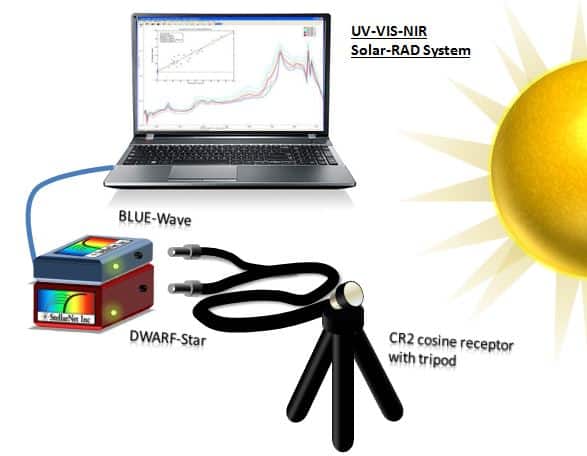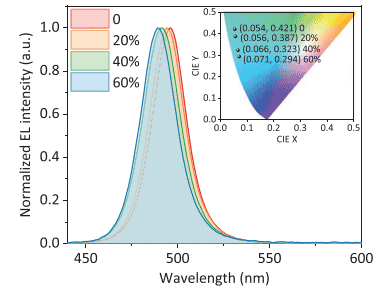
Spectrometers for Solar Energy Research and Development
Our company name, StellarNet, is derived from the original and most common light measurement application – stargazing. Have you ever wondered why some stars are red and some stars are blue? The chemical make-up of stars can be determined by analyzing their spectrum. Our sun, the closest star, can also be analyzed with a spectrometer. Solar energy can be harnessed for human use. Measuring the sun with a spectrometer not only tells us its chemical make-up, but also that of our atmosphere. We can then tune our solar cells and other solar collectors to be optimized for these peak wavelengths of interest.
At StellarNet, we offer a pre-configured Solar-RAD System and the handheld StellarRAD for solar measurement. The system is typically configured for UV-VIS – but we can always add a second channel for NIR applications.
Just about every large solar cell manufacturing company has purchased StellarNet spectrometers over the years. Some are used in production and some are used in ongoing research. Here we present some customer applications in academic research:
Modelling the impact of spectral irradiance and average photon energy on photocurrent of solar modules
InGaN/GaN multi-quantum-well solar cells under high solar concentration and elevated temperatures for hybrid solar thermal-photovoltaic power plants
Performance enhancement of fullerene-based solar cells by light processing
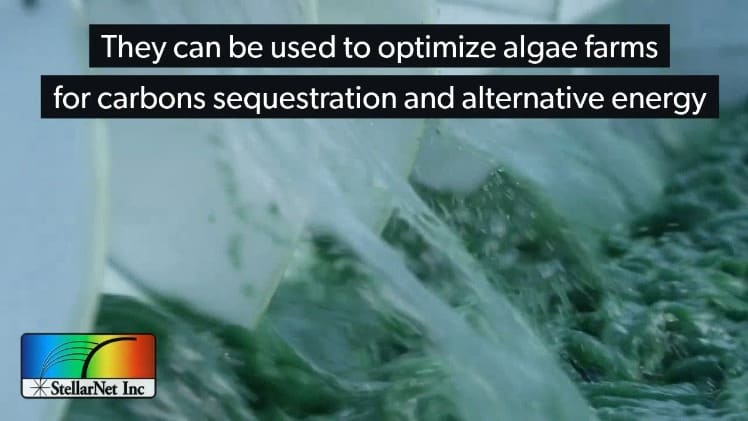
Spectrometers used for Alternative Energy using Algae
Algae are small aquatic organisms that convert sunlight into energy. With more than 100,000 different species, algae are among the most diverse groups of organisms on earth. The key to algae’s potential as a renewable fuel source lies in the way they store energy, their rapid growth rate, and their ability to be cultivated in wastewater or wasteland.
Researchers at Ohio University wanted to find out if algae could be the game-changer in the remediation of wastewater from hydrothermal carbonization (HTC). While HTC is proving to be a promising technology to convert wet waste (think septic tanks) into valuable materials, the byproduct often contains a large amount of nitrogen, phosphorus, and other organic carbon compounds. This team treated the wastewater from HTC with algae. The team used StellarNet equipment to measure the spectral composition of the lamps used to grow the algae.
Read more…
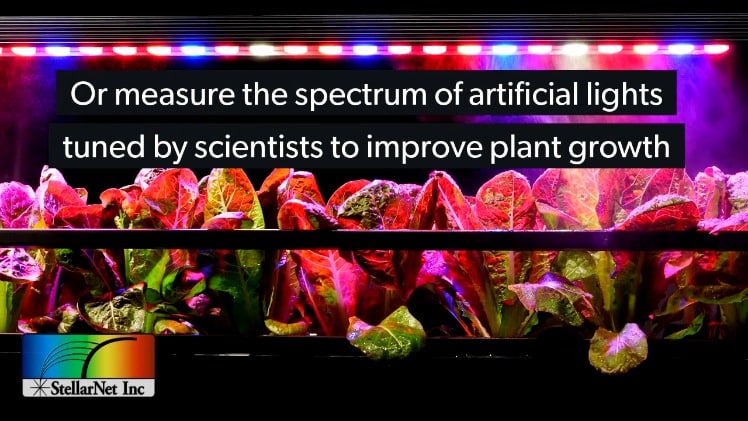
Spectrometers used in Agriculture
Whether studying the solar irradiance transmission into your greenhouse or fine tuning your artificial lamps for your grow house, you will at some point need a spectrometer to be certain of the perfect amount of light delivered to your crops. Our SpectraWiz and StellarRAD-PRO (app software for handheld spectroradiometer) automatically calculates PAR (Photosynthetically Active Radiation) as well as YPF (Yield Photon Flux) and PPFD (Photosynthetic Photon Flux Density). Over the years we have had countless applications and customers using our spectrometers to optimize their lighting conditions to improve plant growth and crop yield.
Have you had your flavonols? Here we present a customer’s agricultural research application that is worth raising a toast! Flavonols have antioxidant properties that are great for your overall health and have been shown to improve cardiovascular function and fight cell damage. Researchers at the University of California, Davis, and California State University used a BLACK-Comet spectrometer to help analyze if the type and amount of flavonols could indicate how much sun exposure the red wine grape berry had experienced. This study found that there is a direct correlation between the overall flavonol profile and the sun exposure the grape experienced.
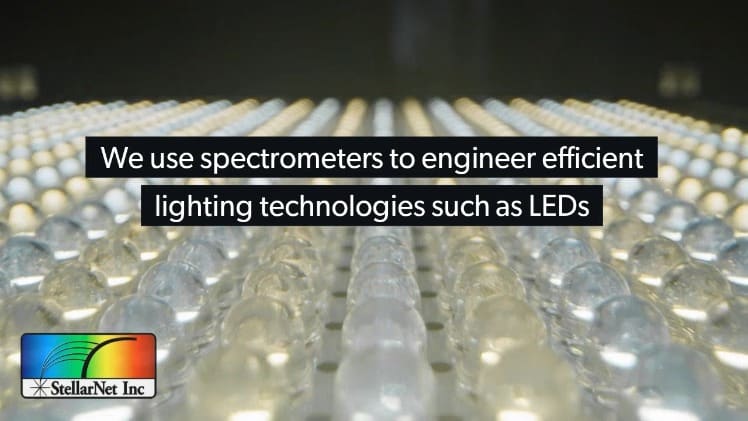
Development of Efficient Lighting Technologies such as LEDs
Over the years, StellarNet has been a regular contributor to LED Magazine, Strategies in Light, Lightfair, and just about every LED industry publication and conference. The reason being is that spectroscopy is at the heart of lighting. Engineering new light technologies means nothing if you cannot measure with accuracy and repeatability. StellarNet offers NIST Traceable calibration for all spectroradiometers and our spectrometer systems are being used in research, quality control, and production of LEDs worldwide. Our software includes CRI (color rendering index), xy chromaticity, CCT, CQS, and many other calculations. Our pre-configured LED Measurement System is most popular among starting customers.
Perovskite light-emitting diodes or perovskite LEDs are becoming more and more popular in the world of lighting. Blue LED is required for creating a white LED light. This customer article discusses a huge step forward for lighting because a new technique to achieve blue-lighting was used called blade-coating. This technique has gotten us much closer to being able to produce flat-panel lighting and full-color displays for the PeLEDs. Read More…

Spectrometers for Displays, Dashboards, and Consumer Electronics
StellarNet spectrometers are used to engineer the coolest consumer displays and dashboards. They are used to measure light emitted from your personal device and from the backlight of your car dashboard. Cockpit and other navigation system lighting depend on wavelength and intensity engineered solutions so human visual systems are optimized. StellarNet offers a pre-configured Display Measurement System with NIST Traceable radiance calibrations. These spectrometer systems can be tuned to have extremely high sensitivity.
As technology advances, humans are being subjected to more and more screens in their everyday life. A team of researchers from Mexico and Canada worked together to see if digitally induced filtering could help mitigate the effects of blue light. Utilizing a BLACK-Comet spectrometer, these researchers measured the output of a variety of different displays and then applied digital filters (by adjusting the color temperature) while reducing the output of the blue light. Read more…
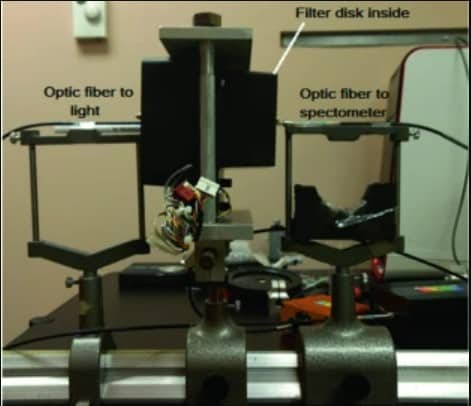
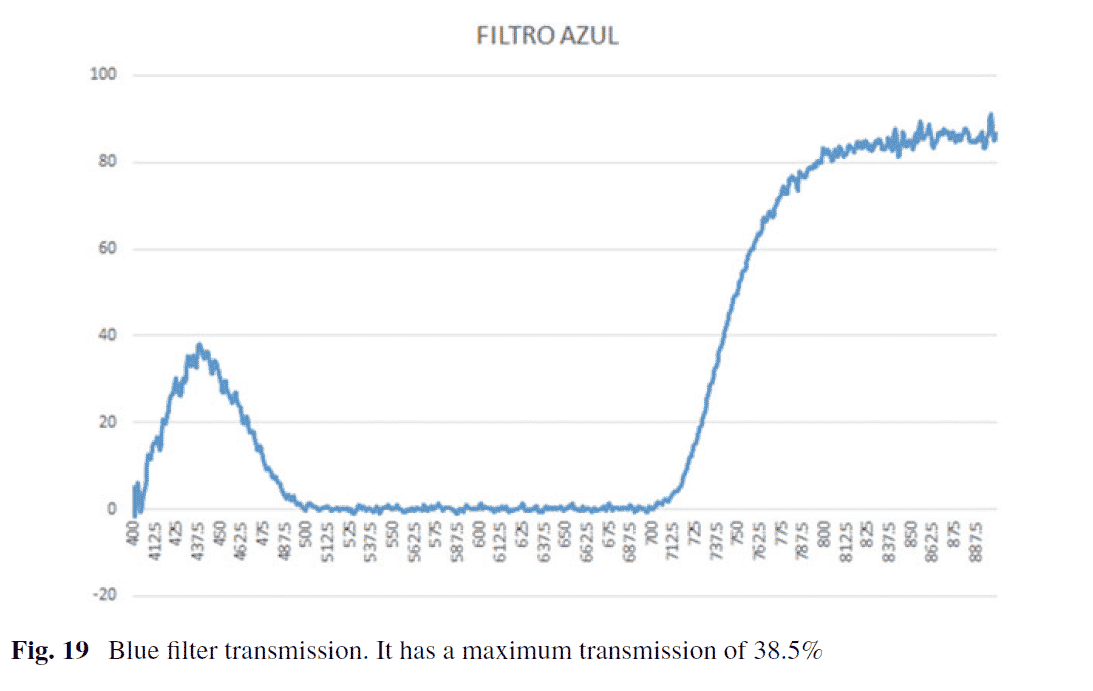
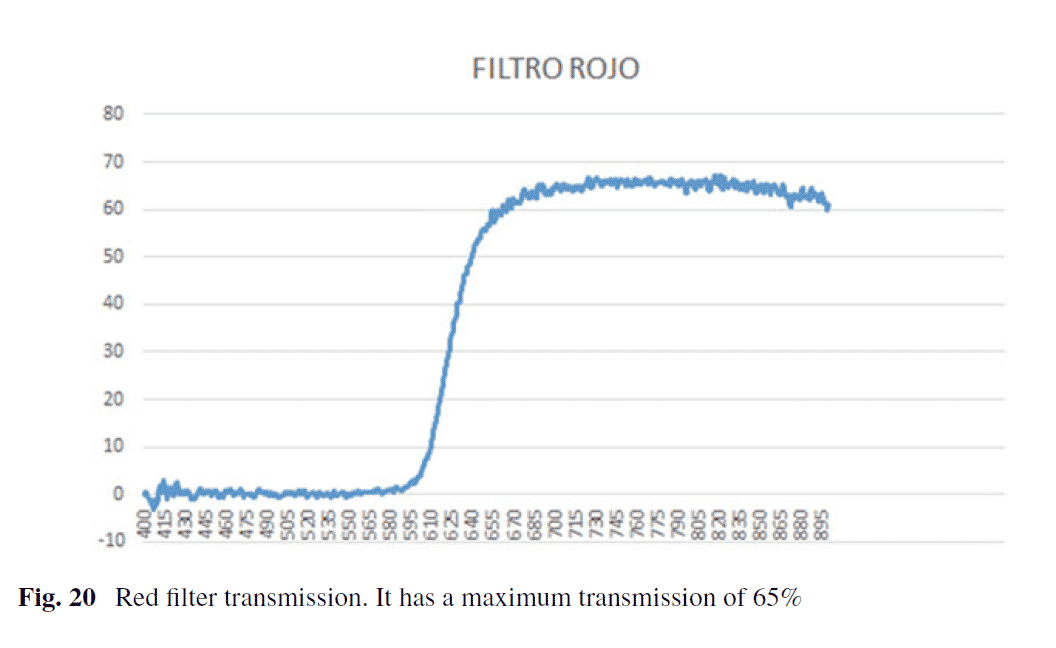
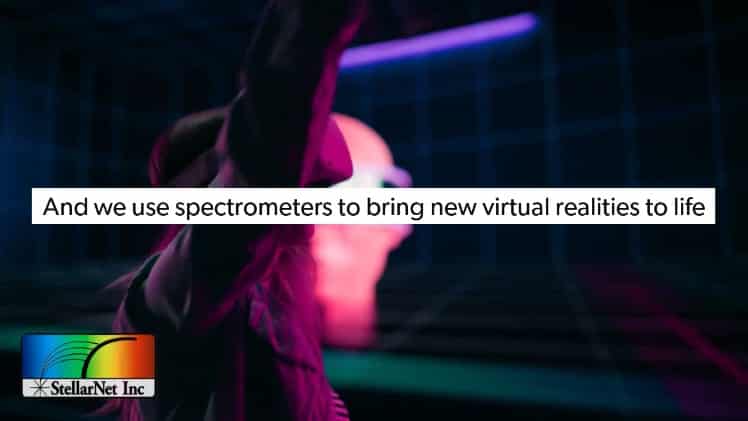
Spectrometers making Virtual and Augmented Reality become a Reality
Virtual reality is a technology that simulates vision to end up with a 3D environment in which a user appears to be immersed while browsing through it or experiencing it. The 3D environment is then controlled in all 3D by the user who is experiencing it. From gaming and social networking to education and marketing, there are many applications for this type of emerging tech. You’ve probably already participated in a virtual reality experience and didn’t even know it! Spectrometers are used in many research, development, and production applications.
Check out some customer research
Subwavelength Plasmonic Color Tuning of Quantum Dot Emission
Quantification of Contrast Sensitivity and Color Perception using Head-worn Augmented Reality Displays
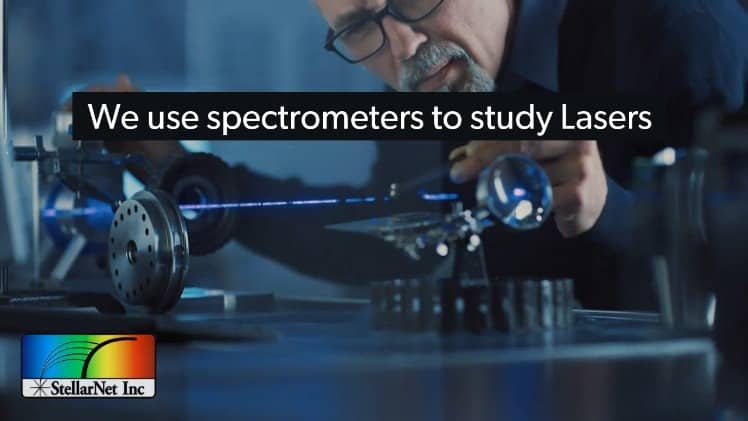
Spectrometers for Laser Characterization
A spectrometer is to a laser researcher as a ruler is to an architect. A laser (Light Amplification by Stimulated Emission of Radiation) is a device that stimulates atoms or molecules to emit light at particular wavelengths and amplifies that light, typically producing a very narrow beam of radiation. The emission generally covers an extremely limited range of visible, infrared, or ultraviolet wavelengths. Just about every laser engineer has a spectrometer to characterize and optimize their optical systems. StellarNet has been providing spectrometer systems to laser and optical engineers worldwide for 30 years.
Check out our Laser Application Archives
https://www.stellarnet.us/category/laser-measurement/

Ultra-Violet (UV) Sanitization and Curing using Spectrometers
Recent pandemic needs for rapid UV sanitization saw an uptick in the need for capable UV light measurement spectrometers. StellarNet provided instruments to many of these companies and researchers to determine what type of radiation, if any, could kill and reduce the virus. UVC radiation is a known disinfectant for air, water, and nonporous surfaces. UVC radiation has effectively been used for decades to reduce the spread of bacteria. For this reason, UVC lamps are often called “germicidal” lamps. UVC radiation has been shown to destroy the outer protein coating of the SARS-Coronavirus, which is a different virus from the current SARS-CoV-2 virus. The destruction ultimately leads to the inactivation of the virus.
Pathogens and pests have become harder and harder to manage because they have developed increased resistance to our current pesticides and prevention techniques. In addition to that challenge, the demand has greatly increased for crops that are grown without pesticides. This has led to the exploration of using alternative techniques in order to control pathogens and pests. One such technique that has been found to be successful in controlling harmful pathogens and pests without causing damage to the plants is using UV-C light. Read more…
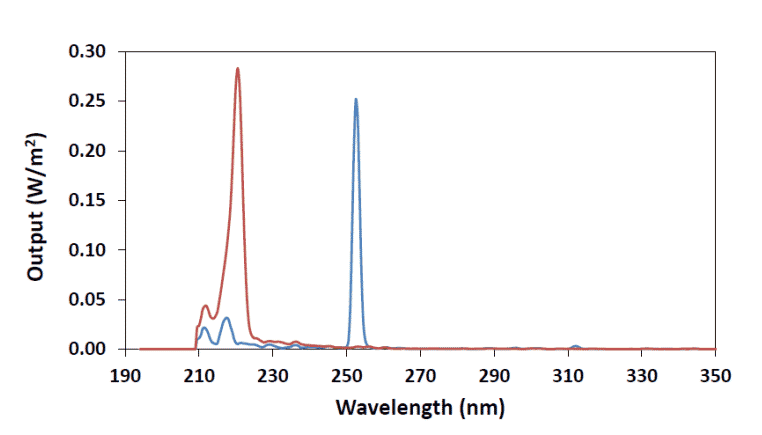
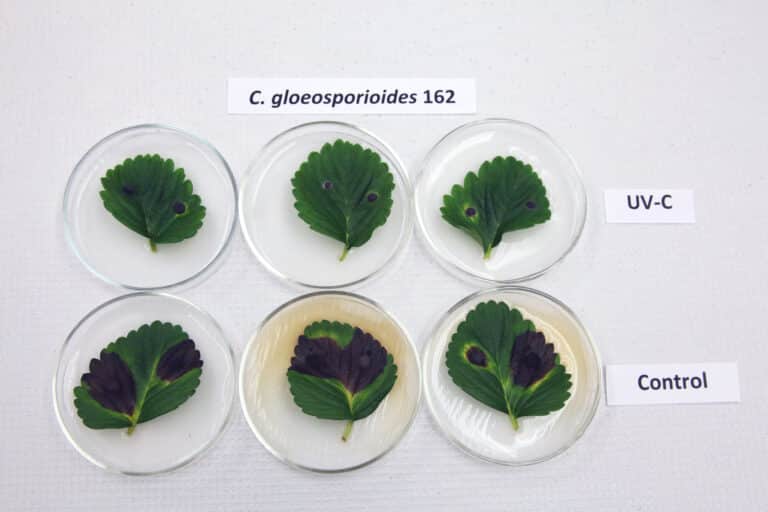
We hope you enjoyed reading about some customer applications. If you’d like your application featured in the future, feel free to drop us a line at ContactUs@StellarNet.us
Cheers to 30 more years!

